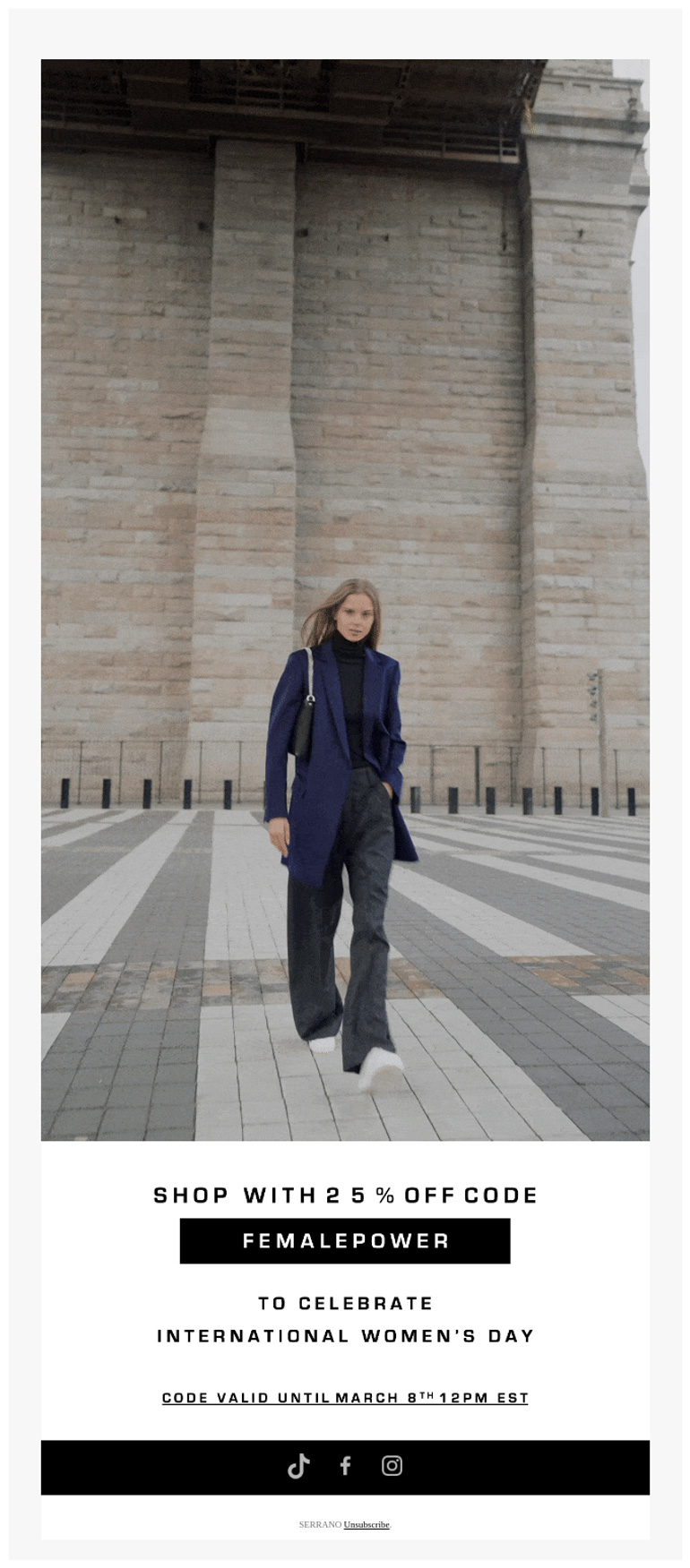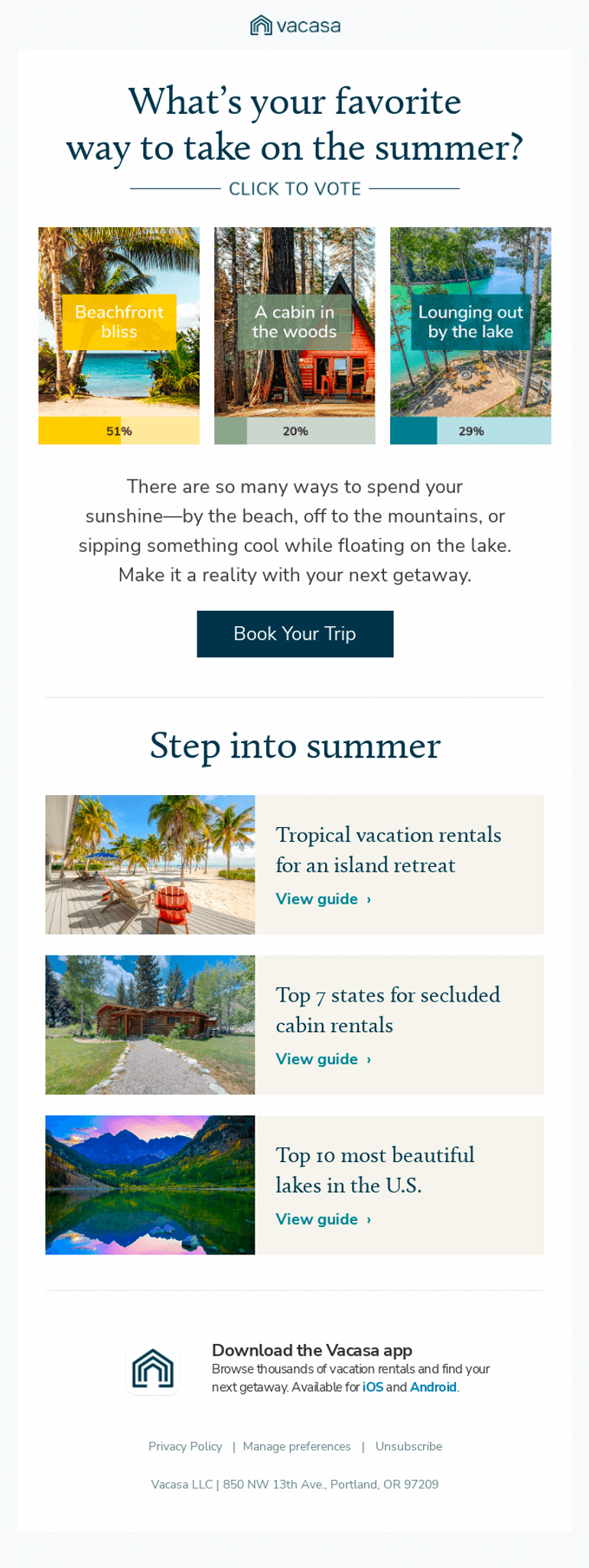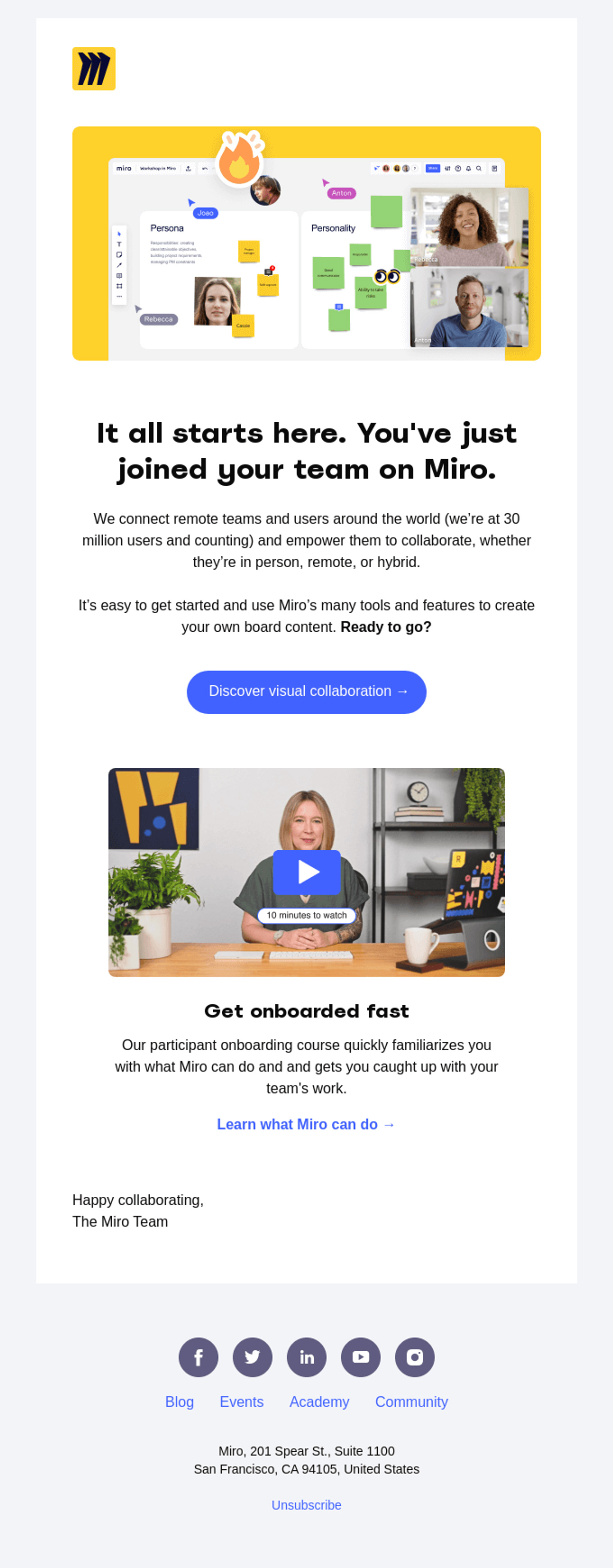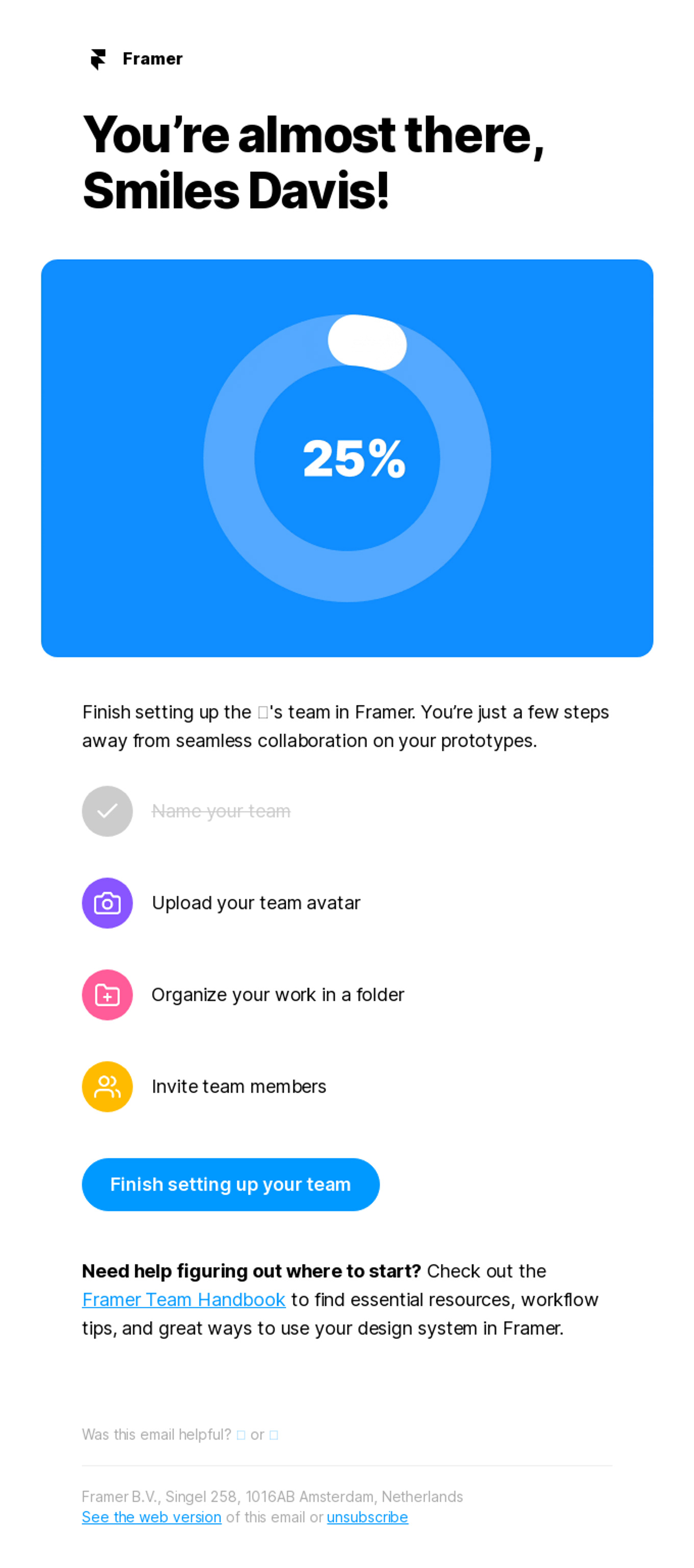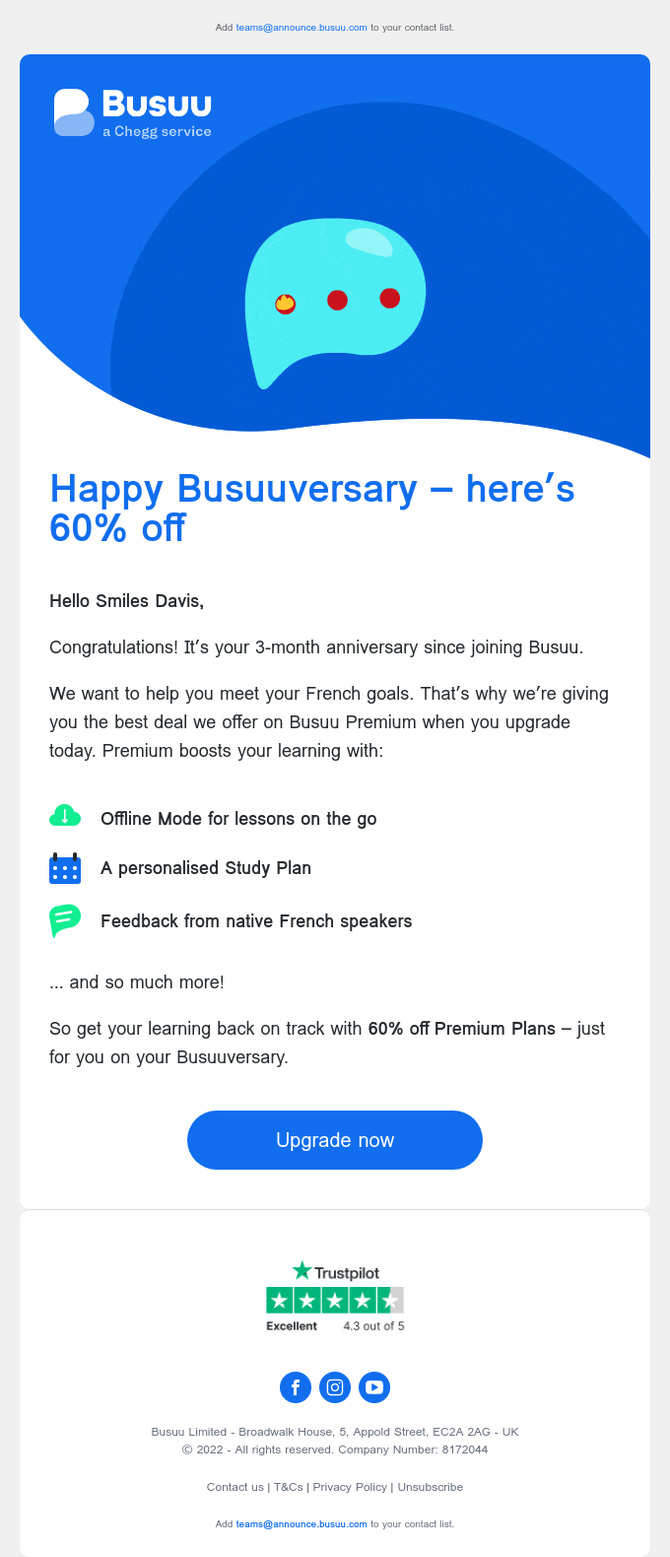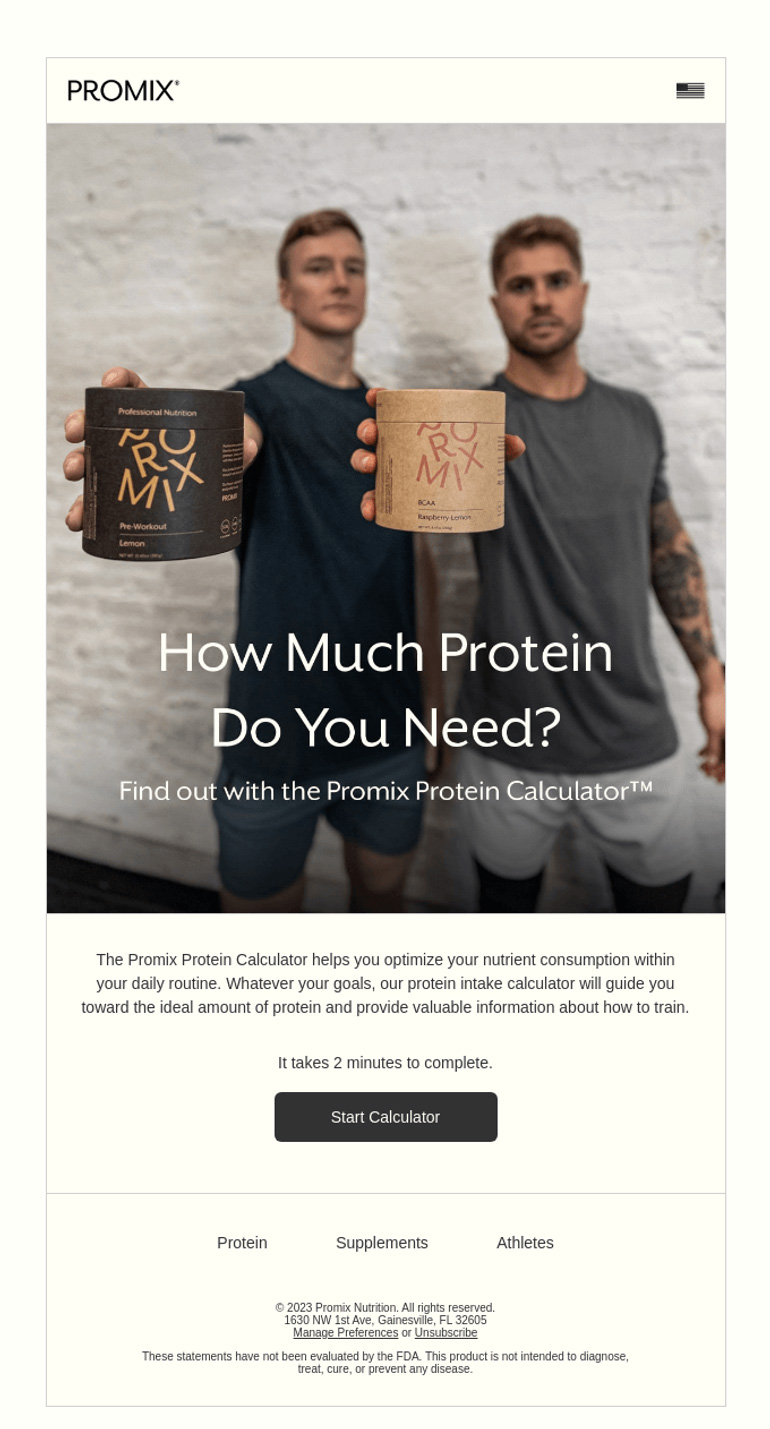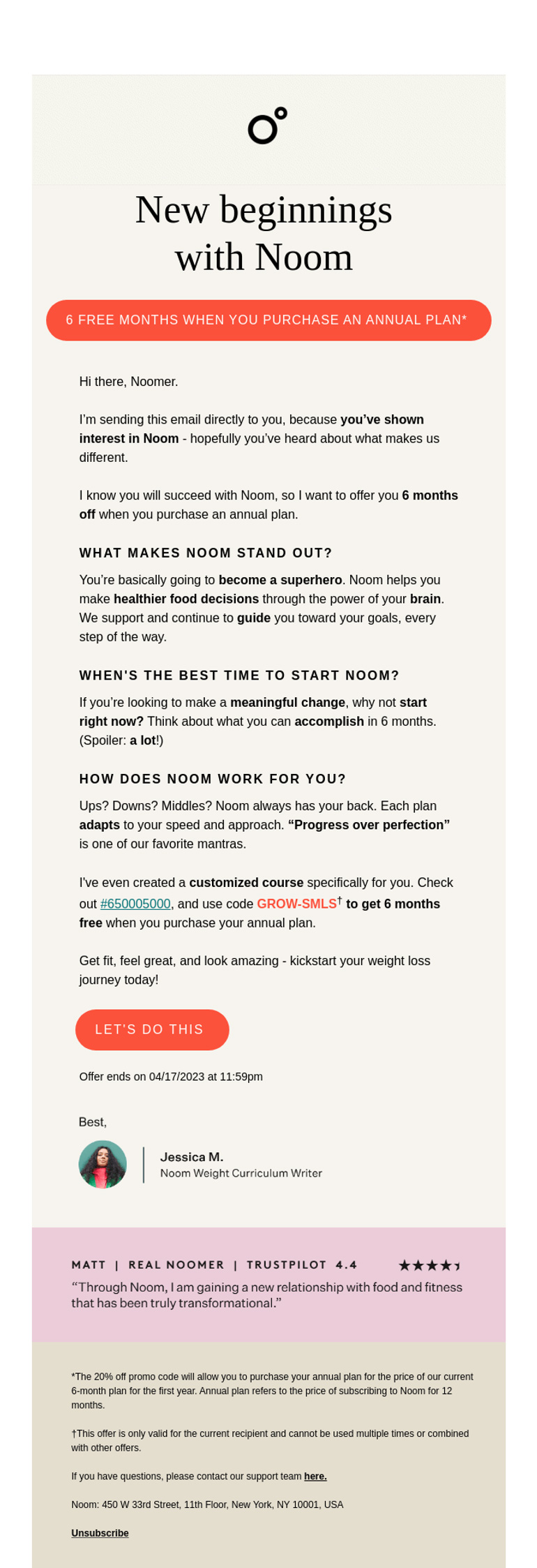In a time when every inbox is overflowing with emails, relevance is more critical than ever. But how can you achieve optimal results with your email campaigns in a world where the recipient's attention is scarcer than ever? The answer is clear: segmentation!
Today, it has become an absolute necessity for every marketer to fine-tune and adapt their message to the specific characteristics of their recipients. From location to purchase history, we'll show you 10 must-have segmentation methods to consistently reach the right audience with your message.
Today, it has become an absolute necessity for every marketer to fine-tune and adapt their message to the specific characteristics of their recipients. From location to purchase history, we'll show you 10 must-have segmentation methods to consistently reach the right audience with your message.
The benefits of segmentation
But first, let's outline the key benefits of segmenting your database:- Tailored messages: You can deliver specific content that perfectly aligns with the interests and needs of each group.
- Increased engagement: When your message directly resonates with what interests your target audience, you increase the chances of them actively responding to your message.
- Improved conversions: By offering relevant offers and content, you increase the likelihood that your audience takes action.
- Lower unsubscribes: With only relevant messages, you reduce the number of unsubscribes and retain all your valuable leads and customers.
- Strong customer relationships: You gain in-depth insights into your customers and prospects, enabling you to build lasting relationships (through personalised and valuable communication of course).
Method 1: Segmenting based on demographic data
Gender, age, marital status, profession, and so on. You know what is meant by demographic data. But why is it so important to segment based on this?This segmentation method is the starting point for a more targeted and effective approach. Used by many. By understanding the demographics of your customers, you gain deeper insights into who they are and what motivates them. This is already a perfect way to understand your target audience much better and to send targeted email campaigns based on their needs. For example, if you're a clothing brand, you can segment your list by gender and send emails with products and promotions tailored specifically for men or women.
Furthermore, when readers receive communication tailored to them, there's a much higher chance they'll engage with its content. Personalised messages increase engagement and ultimately conversions, all contributing to boosting product sales. For instance, if you sell beauty products online, you know that customers fall into different age groups with varying skincare needs. Young adult women, aged 18 to 30, may struggle with acne and blemishes, while customers between 30 and 45 are more likely to require anti-aging skincare products.
Method 2: Segmenting based on behavior
With behavioral segmentation, you divide your database based on specific interactions with your brand or products (online and offline). How do they engage with your emails, website, and other marketing channels? You can examine the actions your users take: purchases, website visits, click behavior in your emails, downloads, and more.Let's go back to the example of an (online) clothing brand. By analysing customer behavior, you can send personalised emails featuring products they've shown interest in. What have they clicked on in your emails? What types of items have they viewed on your website? And what have they purchased? This way, you can suggest specific products or offers tailored to their style.
You don't necessarily have to compose a unique email for each recipient. You can categorise your items into a few fixed taste profiles that align with different trends. You decide when a contact falls into a taste profile.
Emails of this kind are more likely to see higher conversion rates, boosting your sales. It essentially says: do you like this? We can offer you more of the same. Additionally, you can give a final push to those who show interest but might not be fully convinced, like 'abandoned shopping cart' reminder emails, which can be automatically triggered. Would you like to see an example of this? Scroll down to segmentation method 9.
By demonstrating an understanding of your customers' behavior, you provide a more personalised experience. Show them that you know what they want, what they like, and what interests them. The email below is a good example of this. This way, you build a much stronger relationship with your readers, leading to increased loyalty and, of course, fewer unsubscribes.
Method 3: Segmenting based on interests
If you want to ensure that your recipients will actually read your communication, it's important to cater to their interests. With this segmentation method, you divide your database based on specific preferences for products, hobbies, passions, and much more. You tap into subjects that interest them, understand what motivates them, and know what they enjoy doing.Take an organisation that rents vacation accommodations as an example. By analysing interests, you discover that a portion of your customers is mainly interested in adventurous trips, while another group prefers to enjoy a relaxing beach vacation without engaging in exciting treks. For the adventurous types, you can offer specific accommodations in the midst of nature, including details of possible activities. For the other group, you can send promotions for various beach destinations. This way, you demonstrate that you have something for everyone.
Understanding the interests of your customers allows you to email much more targeted content. As a result, your readers will feel more engaged with your brand and communication. When they are looking for a holiday destination, they will quickly check your website.
Tip
How can you precisely know where your recipients' interests lie? This information is most valuable when it comes directly from your readers. Don't be afraid to simply ask...Method 4: Segmenting based on location
With this method, you direct your marketing efforts towards specific geographical areas: country, region, city, or even neighborhood to divide your target audiences. This enables you to tailor content, offers, and messages to the unique characteristics and needs of people in those different locations.Take the example of Airbnb. They know when someone is staying or will be staying in San Francisco based on the booking made. To enhance that stay, they provide numerous suggestions for food or activities. This demonstrates that people can turn to them not only for accommodation. This type of segmentation offers a more personal experience, strengthening the bond with their customers and increasing the relevance of their messages.
Make sure to consider the different time zones in which your recipients live, reside, and/or vacation. You want your emails to be delivered and read at the right time so that they are inclined to engage with your content immediately.
Additionally, don't overlook the cultural and social aspects of a location. By knowing where someone is, you can tap into local traditions, trends, or events that are significant for a specific location - and type of people.
Method 5: Segmenting based on email preferences
This method of segmentation is self-explanatory and is widely used. Dividing your audience based on specific types of content they indicate wanting to receive is always a smart idea! It revolves around understanding the personal preferences of your readers regarding content, frequency, and the type of emails. Some examples include newsletters, product offers, special discounts, substantive updates, or other specific topics.As in the example below, subscribers have voluntarily signed up for weekly updates. They have a genuine interest and desire for that type of content, increasing the likelihood of opening, reading, and responding to such emails. This, in turn, leads to more sales and revenue.
The biggest advantage of this segmentation method is the reduction of unsubscribes. By offering only content that aligns with your recipient's preferences - at the time they want to receive it - you decrease the likelihood of them opting out of your communication. They are less likely to perceive your emails as irrelevant or feel overwhelmed with too many emails that don't interest them.
Method 6: Segmenting based on (lead) source
Where do your subscribers come from? Through which campaign, channel, or landing page did they sign up or show clear interest? Identify the origin of leads and/or subscriptions and segment your database accordingly. Once you know how your (potential) customers became readers, you can set up targeted follow-up actions based on their specific interest or an action they took to sign up. By adapting your communication to this, you create a much more personalised approach.A commonly known source is the sign-up through your own website. This could involve self-registration for the newsletter or weekly updates about your brand or product. Customers often subscribe for specific information or offers. Such a subscription is best followed up with a welcome email. This allows you to confirm that the subscription was successful, specify what they can expect, or share something they might not yet know about you.
Less known - but not less used - sources from which subscriptions can arise include events, social media, paid ads, downloads via your website, reviews, feedback forms, webinars, and the list goes on.
In this example from Zero Bounce, you can see that individuals who have viewed their free resources (likely in the form of downloads) will receive this email. You can infer that these individuals have an interest in the platform but haven't started using it yet. Therefore, they use this opportunity to propose a demo and share more about their product.
Tip
By knowing where your subscribers come from and distinguishing them based on lead source segmentation, you can allocate your revenue and conversions to specific marketing channels. This helps you understand which channels generate the most sales and/or subscriptions. From there, you know where to focus your efforts and optimise your marketing budget.Method 7: Segmenting based on customer lifecycle phase
This segmentation method revolves around understanding where a customer is in their interaction with your business, from the initial contact to repeat purchases. It can be divided into phases such as the onboarding phase for new customers, active customers, dormant customers who haven't been engaged for a while, or loyal customers who return regularly.It allows you to send specific messages that are relevant to the situation the customer is in at that moment. This results in more targeted and effective communication. You can create email communication for each phase: onboarding emails for new leads, win-back campaigns for lapsed customers, or offering special rewards to loyal customers to encourage repeat purchases.
Trying to re-engage dormant customers is a common example. Many companies do their best to re-engage them and encourage them to make a purchase. But let's focus on a different phase this time - the onboarding phase. In this phase, you target new customers who have just joined your business. Welcome them warmly and introduce them to the various features and benefits of your product or service. Encourage them to take action: start using your product or complete the final setup steps.
In a later phase, it's crucial to keep your customers engaged. You want to build strong relationships with your contacts. Reach out and show that you understand their needs. Have they reached a particular milestone? They would like to hear about it.
Method 8: Segmenting based on purchase history
Your customers' purchase history… we touched on this briefly in behavioral segmentation. However, the possibilities are endless, making it worthwhile to consider as a separate segmentation method. It's about understanding the specific products or services customers have bought and what you can communicate based on that. Whether it's one-time purchases, repeat purchases of similar products, or their purchase frequency and order value.Previous purchases provide valuable insights that you can leverage. You can send highly targeted emails that align with these purchases. In addition to cross-selling and upselling by offering products and/or discounts that are related or similar, you can also provide more information. This makes it easier for them to use your product and keeps them engaged with your brand, ensuring they are highly satisfied with your service.
The example below encompasses everything. It's a follow-up email to a customer who recently made a purchase. The recipient is thanked for their purchase, provided with the necessary information to use the product, and given the opportunity to purchase related products. If they share their experience with others, they even receive a discount on their next purchase, lowering the threshold for a repeat purchase.
To build a better customer relationship and stimulate loyalty, you can do more than just communicate about your physical products. By using their purchase history, you can better understand your subscribers' preferences and share other relevant content with them.
Take the example of Promix, which sells various types of sports nutrition supplements. When they know who has purchased protein, they guide their customers further in their buying experience with the Promix Protein Calculator. In this email, they don't overwhelm their readers with more products, offering only a service to loyal customers. This, in turn, can ensure that they will purchase their supplements there again next time.
Method 9: Segmenting based on website activity
To segment based on website activity, you need to collect data through tracking tools on your website. This allows you to understand the behavior and interests of your visitors. What data can you extract from this? Well, you can find out which pages they visited, how long they stayed on these pages, which products they viewed, or which actions they took: filled out forms, downloaded resources, read blog articles, etc.Let's look at some examples right away. Imagine you have an online webshop. By tracking the products your visitors show interest in, you can personalise your email communication accordingly. This is true even if no further action has been taken, such as adding the product to the cart. It can serve as a reminder of the viewed product and an extra push to return to the website, hopefully leading to the actual purchase. Moreover, you can always promote other products or styles that align with their areas of interest.
If you observe that an action has been taken but no purchase has been made, you can use the typical 'abandoned shopping cart' emails. This is a commonly used method to encourage people to complete their purchase. It often happens that visitors place items in their shopping cart but forget about them or are not entirely convinced. Many businesses offer a personalised discount to motivate them to complete the purchase.
The above examples were about physical products. If you provide a platform or service, offering an exclusive discount can also be helpful. This email is targeted at visitors of a specific page on the website, such as a pricing or feature page. Visitors clearly show interest but need an extra incentive.
Method 10: Segmenting based on email engagement
Segmentation based on how customers respond to your communication: opening, clicking, responding, or sharing your emails. This can specifically involve the frequency of opening your emails, clicking on links, or taking a desired action after receiving them.This method has multiple advantages. You can easily distinguish between actively engaged readers and those who show no interest at all. Based on this, you'll send very different communication to these groups. For inactive contacts, you'll try to re-engage them, while loyal customers might receive rewards. Based on previously opened emails or clicks on certain products, you know perfectly well what they are interested in or what information is relevant to them.
By emailing your engaged customers more frequently, you can not only increase your open rates but also your click-through rate. These contacts are more likely to open your emails and click through to your website or landing pages. Creating campaigns that will lead to more clicks and traffic to your website is an art. The email below is a good example. It's probably sent to subscribers who are familiar with the product, open the emails, click on specific product categories but haven't made a purchase yet. Here, they aim to engage these contacts more by offering an exclusive discount.
Tip
When you segment your database based on engagement, you quickly see who has no interaction with your emails. It's not very useful to have these contacts on your list. By removing inactive subscribers, you can not only reduce your costs but also improve your deliverability. Communicating to disinterested contacts can be expensive and harm your email reputation. Better to let them go!Bonus: Segmenting based on device type
If you want to further expand your segmentation approach, you can also divide your database based on the device on which your readers open their emails: smartphones, tablets, or desktop computers. With this information, you can optimise and tailor your email design and content to specific screen sizes and resolutions, ensuring the optimal user experience. Your emails become more accessible, more readable, and scannable, making recipients more likely to engage with your content.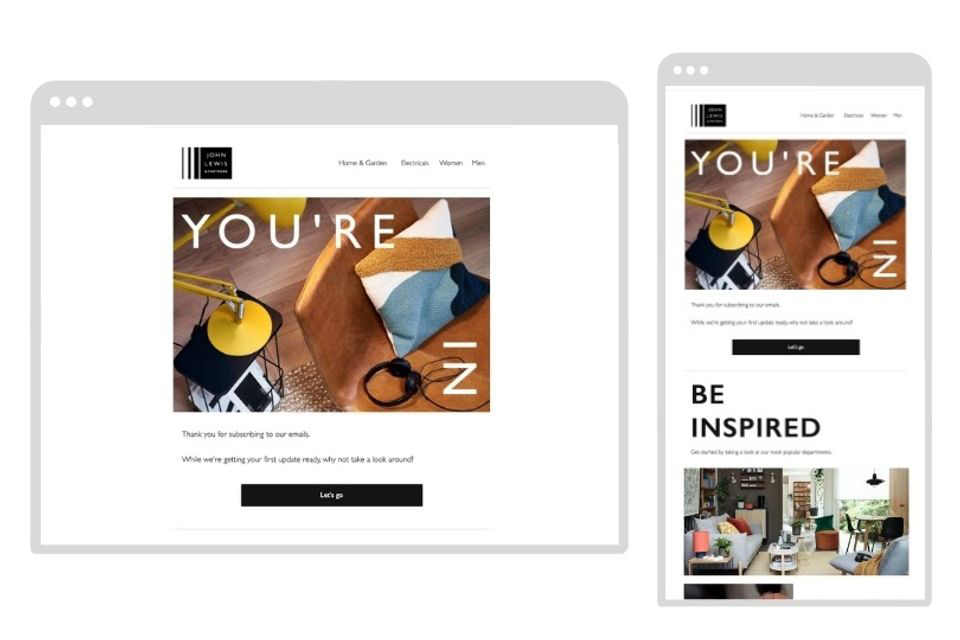
Responsive emails increase your deliverability. If your campaigns are optimised for every device, you reduce the chance of being marked as spam or unwanted. Even better, you won't be ignored by your readers because your emails are all over the place.
Lastly, the device your customers use for all their communication and entertainment says more about them than we might think. Behaviors on a smartphone are certainly not the same as on a desktop computer. With these insights, you can do better targeting and send content and offers that match the type of device and its usage.
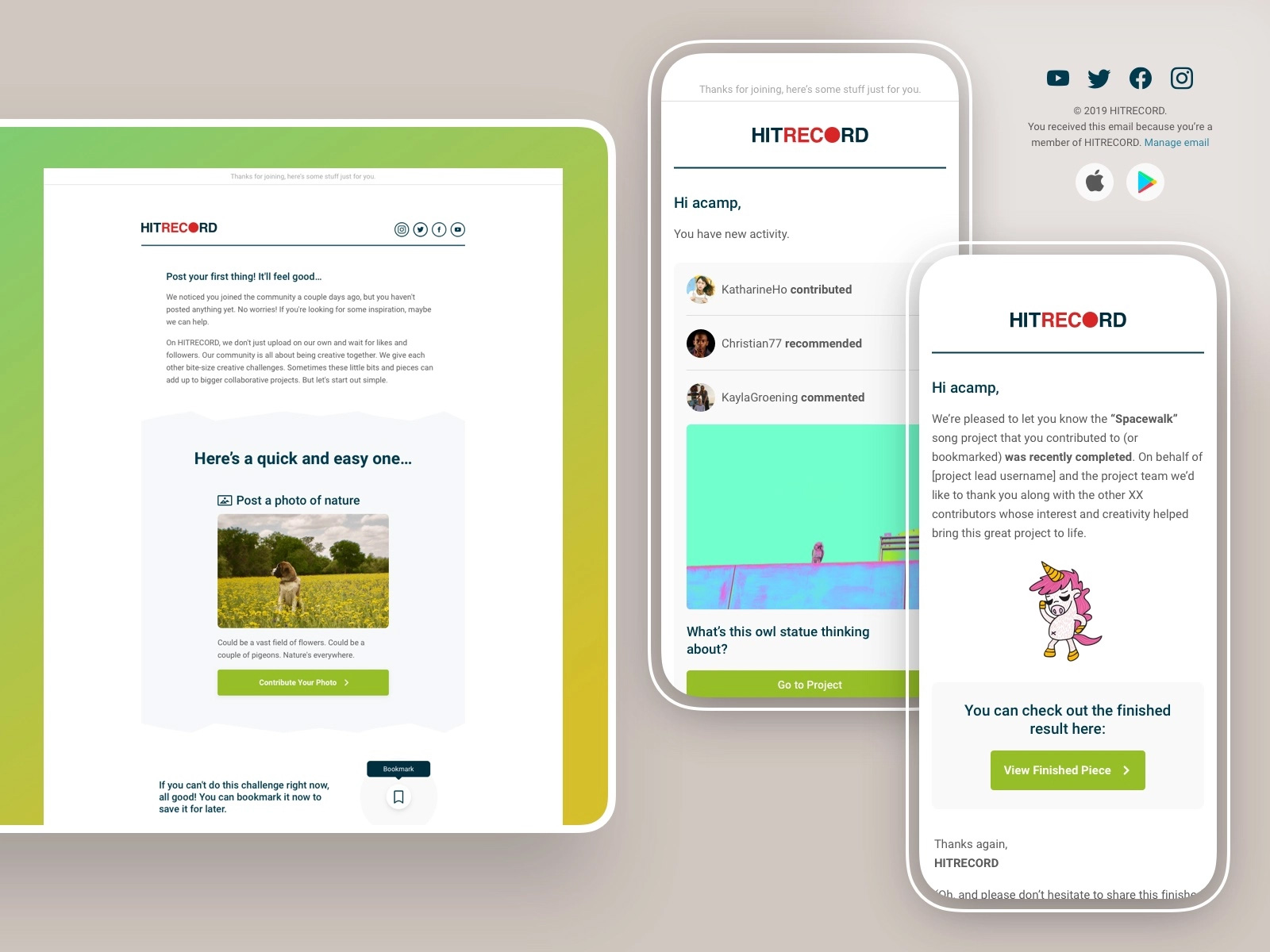
But first: test
You now have the best possible segmentation scenarios, but before you dive into these, testing and refining these strategies are essential for the success of your campaigns. You need to continuously evolve, learn, and adapt your segmentation approach. You want:- The best results: By testing different segmentation methods, you can determine what works best for you and your audience(s).
- Avoiding mistakes: Testing first prevents costly mistakes and ensures that your campaigns are as effective as possible.
- Increasing engagement: You want targeted campaigns that resonate with your audience, allowing you to build strong relationships.
- Staying current: Customer behaviors, preferences, and interests can change rapidly. Segmentation methods that were effective for you in the past may not work as well anymore. By continually testing, you quickly notice changes.
- Saving time and resources: By testing which method works best for you, you waste less time and resources on campaigns that are likely to fail.

